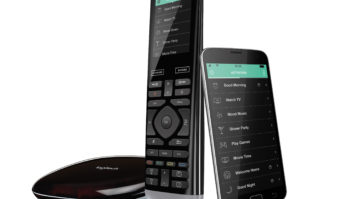The word “marketing” and how it applies to an organization means many different things to many different people. Often, managers at small to mid-sized companies cringe when they hear the word, assuming that legitimate marketing efforts are reserved for larger international conglomerates with the resources to spend on such an intangible endeavor. Additionally, many executives believe they do not have the time to dedicate to marketing after tending to their sales and operations departments. In reality, marketing shouldn’t be such a burden.
“Marketing is all contact that anybody in a company has with anybody outside the company. That includes what they are wearing when they are doing the installation, how their telephone is answered and the appearance of their own facilities,” explained author and marketing consultant, Jay Conrad Levinson. Levinson, author of the best-selling Guerilla Marketing series of books (Houghton Mifflin), believes that marketing is about human interaction.
“It has a lot more to do with real human contact than formalized marketing that appears in the form of advertising and public relations,” he said. “Marketing is a process, not an event. Some people think that marketing is something they’re going to do next month and see what happens, but in reality it’s a process that doesn’t just occur next month. It can start next month, but it’s got to continue on for the life of the business.”
Levinson’s philosophy on marketing focuses on the tools companies have available to them through sheer existence. “[Companies] have time, energy and imagination, which are the primary investments you make into guerilla marketing,” he said. “They have a good notion for why they went into business in the first place. They already know what their competitive advantages are. Finally, they have expertise in their field, which enables them to offer free consultations, or to give talks at clubs, or to write articles for publications–not about their business, but about their industry. Those are some marketing tools that companies already have, and they don’t have to invest a cent in order to activate them.”
Community involvement is another inexpensive marketing opportunity, Levinson suggests. “By becoming involved in your community you can prove you’re conscientious just by your deeds more than your words, and it enables you to network with your prospects,” he said. “People realize that the more generous you are the more business you can write, and that’s why I talk about free consultations, giving free seminars and having free demonstrations.”
These actions very often lead to word-of-mouth business. Noted George Silverman, consultant at Market Navigation Inc. (Orangeburg, New York) and author of The Secrets of Word-of-Mouth Marketing: How to Trigger Exponential Sales Through Runaway Word-of-Mouth (Amacom). “Among architects, engineers and people who specify these products for residences, word-of-mouth, or at least some implied endorsement, is really important. Almost all of the things that custom installers are selling are discussed with somebody else–a spouse, friend, colleague, or trusted advisor. Custom installers need to think about what’s going to cause word-of-mouth.”
Television has provided a number of custom installers and manufacturers of residential technology products with, arguably, some of their biggest marketing opportunities. Steve Hayes, partner at Custom Electronics Inc., a custom installation firm based in Falmouth, Maine, aggressively pursues television appearances. “The credibility that TV offers is unparalleled,” he said.
“Television appearances are marvelous, but people have got to be prepared for when they are on those shows,” Levinson said. “They have got to be able to speak in sound bites. They have got to be able to keep things very simple with what they’re saying. It’s a marvelous opportunity for them to make an impression and to establish themselves as an authority, because, after all, they’re on television. People really have to make the most of those golden opportunities.”
Hayes and his company, Custom Electronics, participated in three projects for This Old House, two of which are in syndication. According to Hayes, each project ran for 13 weeks–the life of the production schedule on any given episode. In addition to performing the actual installation, Hayes and his colleagues were required to rehearse and then deliver lines for the camera. While the end result may seem natural and spontaneous, Hayes stresses that this isn’t the case at all.
Winning a spot on a television show is a difficult process in itself. Hayes claims that it took seven years before Custom Electronics was featured on This Old House. He still maintains contact with the show’s producers, and declares that he would jump at the chance to appear on the show again, in spite of the hard work.
“I just kept calling and calling,” Hayes said. “I learned who the producer was and I sent him notes. I just kept at it.” After introducing himself to This Old House co-host Norm Abrams and the show’s producer at an industry event, Hayes and his company’s involvement in the show were secured.
Hayes believes that his efforts were well worth it. While it is not customary to receive payment for appearing on a show, the end result was favorable for Custom Electronics: the company tracked approximately $500,000 worth of business derived from each show. The fact that Custom Electronics was represented on a popular television program continues to facilitate the firm’s sales process.
“About nine months after the first show we got a couple of calls, and there was no conversation about who we were–the credibility was already there,” Hayes said. “They said, ‘We saw you on TV and we want you to do the job.”
Syndication has provided Custom Electronics with a number of happy surprises. “After about a year, we would come in on a Monday morning and there would be about 15 calls from Phoenix,” he said. “They had been syndicated in that area.” After qualifying the potential clients over the phone, Hayes would determine whether his firm would travel the distance to conduct the project, or he would refer the customer to a CEDIA member in their respective area.
Light, Sight and Sound Inc., operating out of Maryland and Florida, has also enjoyed television exposure, including appearances on local TV stations, This Old House and HGTV’s Dream Homes, the latter of which has not yet aired. “It is worth it on a local level to have exposure within your region,” said Jay Montgomery, founder/president of LSSi. Montgomery has recently been appointed chairman of CEDIA’s Industry Development Council. “It is also certainly worth it to be involved in a larger project, such as the national shows, but the local exposure affords you a direct, tangible difference that you will see within your marketplace. It will make the phones ring and you will increase your revenues directly. The national exposure serves for name-dropping’s sake.”
However, companies that participate in television appearances are, in a way, in the hands of the producers’ discretion and filming schedules. “We have no idea what the HGTV show will include, when it will air and whether we will be viewed in a positive or negative light. Or, if we will be featured at all, as there is no assurance that our footage won’t be left on the cutting-room floor,” Montgomery admitted. “But we got out of it what we wanted to, which was exposure to this process, some great contacts, and we were compensated doing it.”
In this case, Montgomery stated, LSSi was paid by the hour for all of the company’s consulting and design work on the project, which, as noted earlier, is rare in these cases. Atlanta, Georgia’s Link Your House, a ConnectHome dealer, was recently selected to appear on HGTV’s Before & After series. The company, which will be involved in a residential remodeling project in the Atlanta area, has expressed enthusiasm at the prospect. “Being selected to work on a project like this is a great way to showcase our skills and talent,” said president of Link Your House, Nick McCulloch. “We are dedicated to this industry and we take great pride in all of our projects. There is a tremendous amount of competition in our area and we are excited to be selected as one of the companies that help the homeowner with their renovation.”
For manufacturers, the television process differs slightly. In most cases, the manufacturer is contacted once the installer specifies their product. Even though the product may be a part of the installation, it may not appear on camera. Miami speaker manufacturer Niles Audio Corp. has had product featured on HGTV shows and other programs. Michael Strange, Niles’ director of marketing, believes this exposure is a great opportunity for the company.
“We try and do as many of these project houses as we can,” Strange said. “We like to get involved with them. They are nice showcase pieces for our products, as well as other manufacturers’ products, and they just seem to work out well. They make a nice promotional venue and everyone comes out ahead.”
Despite the fact that a product logo may not be featured on camera, the benefits still remain. “You may not even get air time,” Strange said. “With most of these companies, they will not mention the brand name of the product that is being put on the air. As a matter of fact, they are usually pretty specific that they won’t guarantee you any on-camera time. You will get credits at the end and you will get links on their web site, but you want to make sure that your logo is visible on the product that you do install and try to get as much visibility as you can. And the better you cooperate with these people, the more you make it valuable to them, the more they are willing to put your product up on camera.”
For those companies that opt out of chasing television spots, there are still many ways to create a buzz. While at one time marketing was thought to have been reserved for corporate giants, it has evolved to the point where small and medium-sized businesses can be as sophisticated in their marketing as their larger counterparts.
“I would urge people to realize that they don’t have to spend money in order to market aggressively,” Levinson said. “Most people think marketing equates with money and that’s not true. If you’re willing to invest time, energy and imagination, and lean upon your own expertise, you might find that you can do a lot of marketing without spending a cent.”
Carolyn Heinze ([email protected]) works from her office in Vancouver, Canada.


